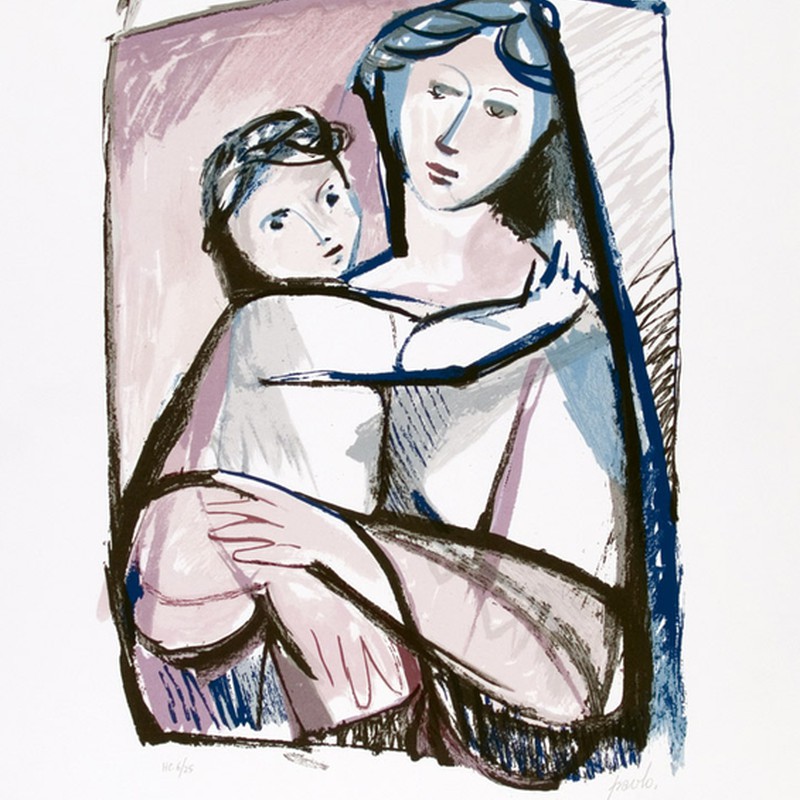
Paulo Ferreira
Born in Lisbon on November 22, 1911. He was a painter, decorator and illustrator. He presented his first drawings and paintings in the year of ffffff;"> 1921.
In 1928 he lived in Madrid, where he frequently visited the Prado Museum, starting as an illustrator after return to Lisbon. In the following years he collaborated with important national publications such as Diário de Lisboa, Diário de Notícias and in magazines such as ABC, Civiliza¸´o, Ilustra´o Portuguesa, O Semper Fixe. He was one of the founders and the most important scenographer and costume designer of the Companhia Portuguesa de Bailado Verde Gaio in the 1940s
Throughout his artistic career, he participated in several Modern Art Exhibitions at the S.P.N./S.N.I. (Sousa-Cardoso Prize, 1939; Tagarro Prize, 1945). He was part of the teams of decorators at national inns and Portuguese representations at International Fairs and Exhibitions (namely at the exhibitions in Paris, 1937, New York and S. Francisco, 1939, whose team included ;also Fred Kradolfer, Carlos Botelho, Bernardo Marques, José Rocha, Emmerico Nunes and Tom). He participated in the Portuguese World Exhibition (1940). He was the author of three mural paintings alluding to the city of São Paulo. Estremadura at the Popular Art Museum, Lisbon.
Dedicated himself to the organization of exhibitions among many other initiatives for which he was responsible and in 1942 he organized the 1st Exhibition of Modern Illustrators; curated the first modern retrospective of Amadeo de Souza-Cardoso in 1958 (Casa de Portugal, Paris; SNI headquarters, Lisbon); He was Commissioner of Portugal to Portugal. Paris Biennale, 1961; In 1972, he coordinated, for the Gulbenkian Foundation, an exhibition on Robert and Sonia Delaunay's contacts with Amadeo de Souza-Cardoso, Eduardo Viana, José Pacheko and Almada Negreiros.
Among the distinctions attributed to him, the most notable is being decorated with the officership of the Order of Christ in 1940.
He settled in Paris in 1949.
Between 1954 and 1974, he headed the artistic services of Casas de Portugal in Paris, London and New York.
Part of his work is represented at the Chiado Museum, the Amarante Museum, the Calouste Gulbenkian Foundation, among several other important public and private collections.
He passed away at the age of 88, in 1999.